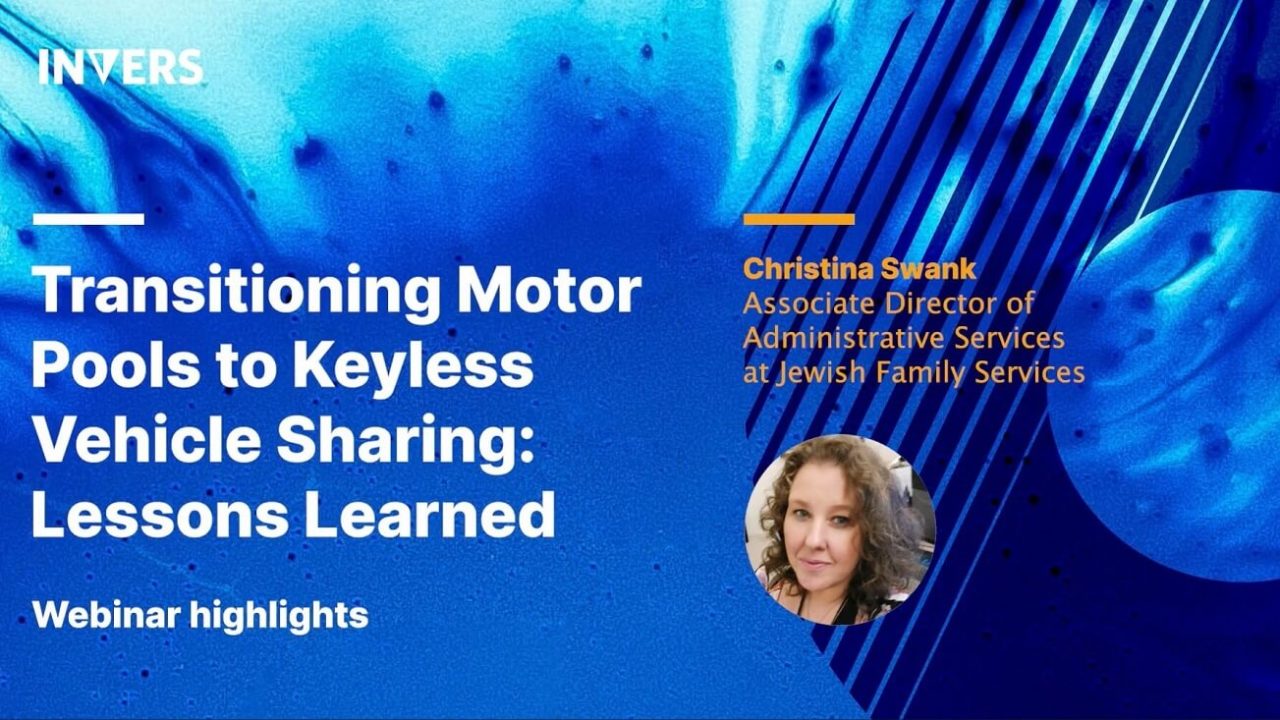Webinar Recap: Transitioning Motor Pools to Keyless Vehicle Sharing
Summary
Christina Swank, Associate Director of Administrative Services at Jewish Family Service of Atlantic County (JFS), joined Paul Hirsch, CEO of Launch Mobility, and Chris Anderson, our Sales and Partner Manager for a webinar on lessons learned from transitioning motor pools to keyless vehicle sharing. Our panel provided interesting insights on the signs that a motor pool is ready for a keyless system, the benefits of a digital solution, and how to plan the transition.
Fleet managers face a range of pressures due to rising costs and scarce resources. The costs of vehicles, maintenance, and staffing are rising. Operations are getting more complex. At the same time, operators want data to make fact-based decisions quickly while also maximizing the utilization of their vehicles. Some of the more innovative motor pools are switching to keyless, digital vehicle sharing systems to save money and get the advanced insights they need. For the transition to be successful, the implementation of new technology needs to be well timed and planned out. Below are key lessons and expected benefits from making the switch to keyless systems discussed at our webinar:
Communicate the change to staff clearly, often, and through various channels
As project manager for the implementation, Christina communicated with the following stakeholders:
- INVERS (the vehicle sharing hardware provider)
- Launch Mobility (the vehicle sharing software provider)
- Installers
- Her IT department
- JFS staff
While all stakeholders required a steady amount of effective communication and updates, the staff required a particularly hands-on approach. The switch from a low-tech bladed key to an app could have been challenging for the less tech-savvy users. Christina used both written and in-person communication to make the training effective: “for training on the app we had staff meetings, and I also put out emails with hacks and screenshots to give staff little, helpful hints. (…) If they were still having issues, I’d walk out to the car with them and say ‘show me what you’re doing, let’s walk through this together.'”

Christina also recommends finding an internal champion to beta-test the new system and help promote the new system from within. This employee was a key part of the pilot for the new system. This tech-savvy user was the first one to have the app installed on their phone and was given a sharing-enabled car to test various situations. The beta-tester then made recommendations and requests to INVERS and Launch Mobility to make the system better suited to JFS staff needs.
Pilots phases are critical
“Planning is great, you can plan for all the things (…) and everything is fantastic until you add users, and they tend to break everything.” Users might pick up their car early, end their trip late, and notice they forgot their umbrella in the vehicle only after they ended the trip. A pilot phase helps operators uncover challenges and faulty assumptions. It’s much better to discover those challenges during a two-three month pilot like Christina did, than after going live.
According to Paul, a lot of what is tested during the pilot is the operations. It’s important to build up sufficient activity during the pilot, which hopefully includes more than one vehicle, to understand how much a system can support. A thorough pilot will help operators understand the balance they need between vehicles, volume, and utilization so that they will have the right vehicles at the right place and at the right time.

The benefits of switching motor pools to keyless vehicle sharing are well worth the effort
Christina listed several benefits and positive outcomes resulting from the transition, including:
Operational savings. In the first year after the transition, JFS saved $10,000 on parking, tolls, and drivers’ mileage and time reimbursements alone thanks to increased operational efficiencies.
Less need to physically check cars. Prior to keyless systems at JFS, someone inspected each vehicle on four different lots to record the mileage. This took place weekly or bi-weekly and took the better part of a day. Now, it takes Christina 30 minutes to check the mileages of all vehicles to decide whether service is needed.
Less time wasted waiting for a jump-start. Knowing the battery level in each car lets Christina send out maintenance for cars with low or dead batteries. Previously, drivers would discover dead batteries and wait for help to arrive.
Insurance savings. JFS was able to get lower insurance rate for their fleet since the telematics hardware enabled remote immobilization and GPS location.
Improved employee safety. Since cars can now be locked, immobilized and tracked remotely, drivers no longer feel compelled to stay with the vehicle in unsafe situations. Additionally, GPS tracking lets JFS quickly locate broken down vehicles and send help.
More efficient operations. Thanks to insights from digital reports, Christina determined which locations had the highest and lowest demand for vehicles. This info, along with date on usage at different times, allowed her to balance her fleet more efficiently. The digital system also prevents double-bookings, and encourages staff to reserve cars for only the time they need them.
More from the webinar
Christina, Paul, and Chris also provided insights on keyless sharing hardware and software, and answered questions from the audience about:
- Randomizing vehicle assignments to staff.
- How vehicle theft is prevented with keyless systems.
- Methods for users to access vehicles other than a mobile app.
- Key points to address before starting a transition to keyless vehicle sharing.
- Milestones and signs that indicate a motor pool is ready for keyless vehicle sharing.
You should check out the entire webinar recording if you’re looking to reduce costs and improve operational efficiencies in your motor pool.
Do you have questions about the telematics connectivity solutions mentioned in the webinar? Please contact our experts to learn how you can connect to our flexible, vehicle-agnostic system.


